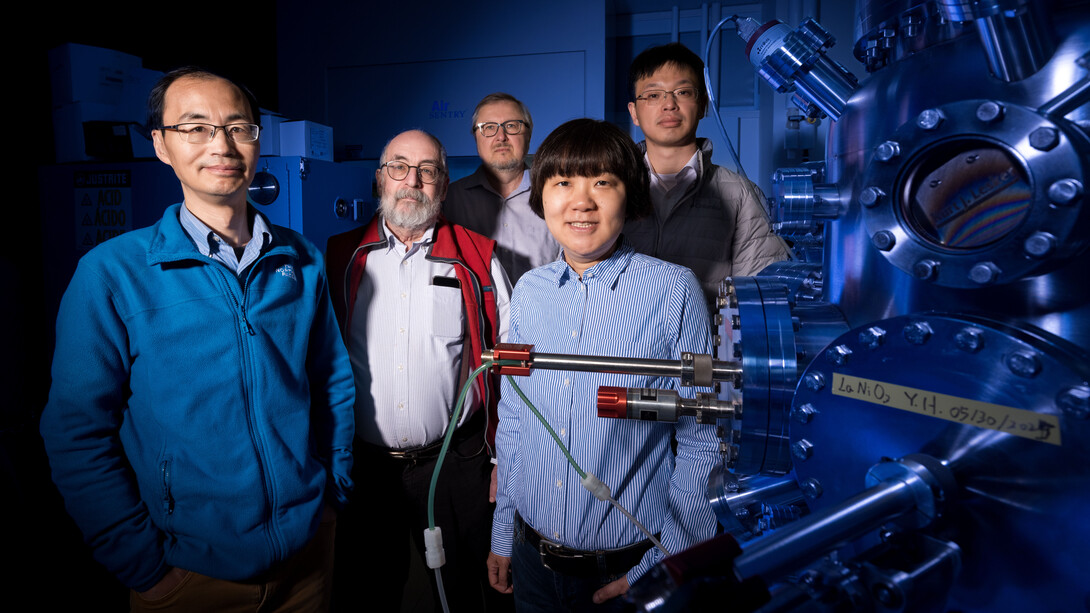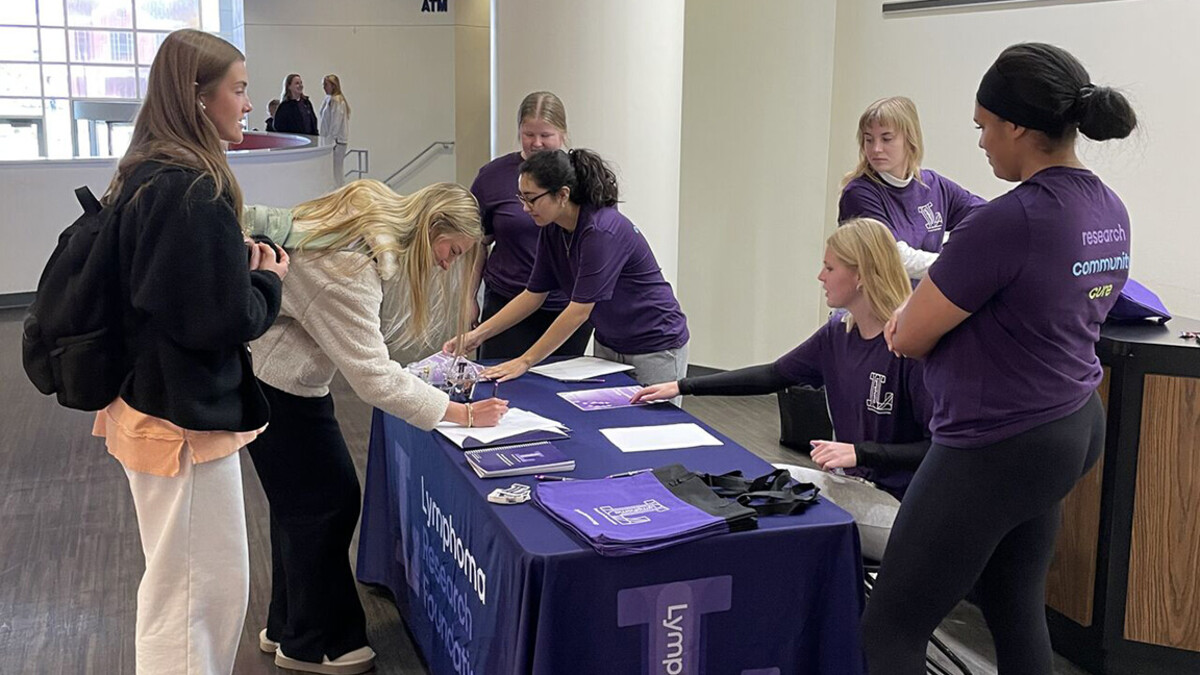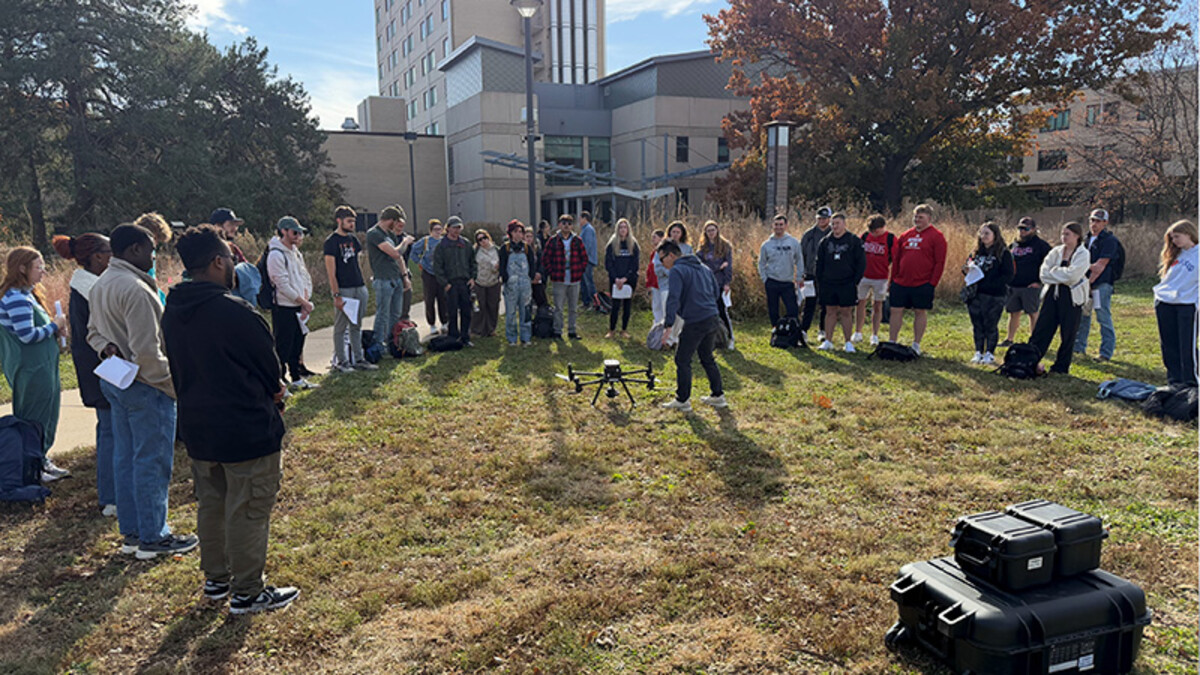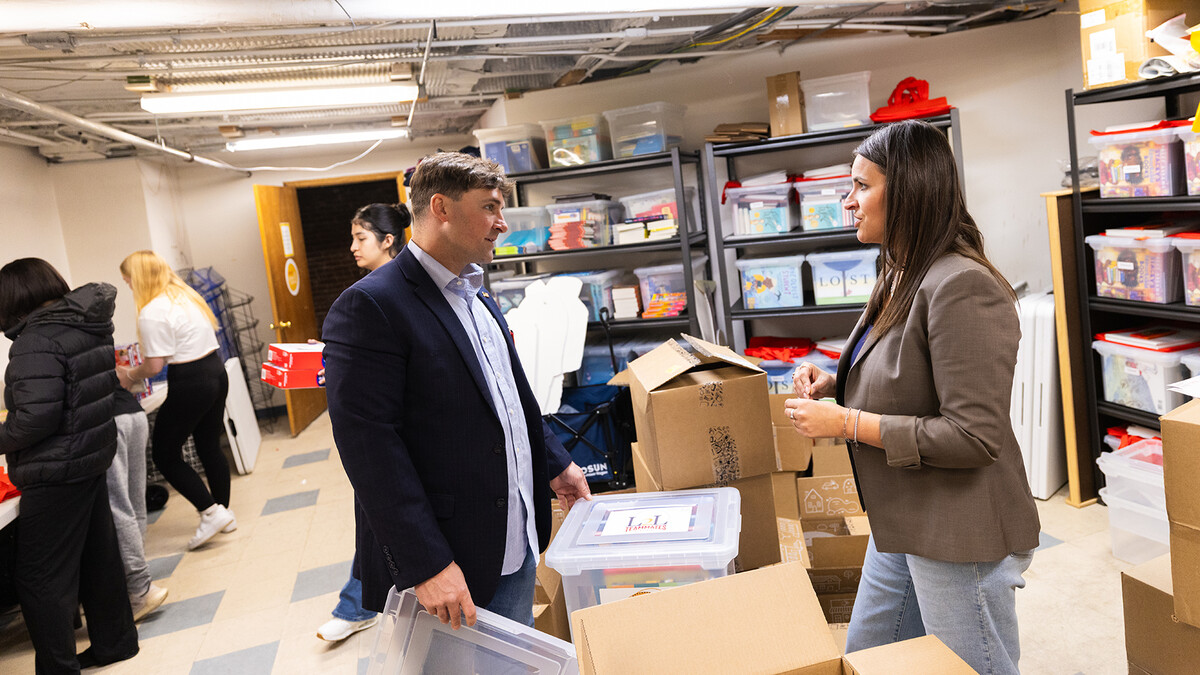
The University of Nebraska–Lincoln continues to build out its lineup of expertise in quantum materials, with a new $2.5 million grant to investigate the use of ferroelectric oxides for exploring emergent quantum phases and designing more powerful and energy-efficient electronic devices.
A seven-member team led by Xia Hong, professor of physics and astronomy, aims to exploit ferroelectric oxides to control oxide and van der Waals materials in ways classical physicists only dreamed were possible, such as switching from a metal to an insulator, or from magnetic to nonmagnetic and back again.
“The overarching goal is to use nanoscale control of ferroelectricity to induce a new state of matter,” Hong said, “and, in the process, foster the design of smaller and more energy-efficient devices.”
The two-year grant was awarded by the national Department of Energy’s Established Program to Stimulate Competitive Research (EPSCOR). It is the third significant award to scientists affiliated with Nebraska’s Emergent Quantum Materials and Technologies (EQUATE) Center in recent months. Previously, a team led by Christian Binek, Paula and D.B. Varner Professor of Physics and EQUATE director, was awarded a $1.8 million, four-year grant through the National Science Foundation’s EPSCoR program to investigate novel two-dimensional or “flatland” materials. An international team led by Evgeny Tsymbal, George Holmes Distinguished Professor of physics, was awarded $2 million through the NSF’s Designing Materials to Revolutionize and Engineer Our Future program.
“These awards build on the momentum created when EQUATE was established nearly five years ago with a $20 million NSF grant,” Binek said. “They will allow us to continue pursuing this significant area of research and to expand our storehouse of expertise in quantum materials science here in Nebraska.”
Hong, who serves as principal investigator for the DOE EPSCoR award, said workforce development is an important aspect of the new project, titled “Emergent Interface Phenomena Enabled by Ferroelectric Oxide Thin Films and Membranes.” South Dakota School of Mines and Technology is partnering on the grant, which is renewable for up to four more years.
The EPSCoR award requires infrastructure development in Nebraska and South Dakota. It will help support three early career scientists — Zuocheng Zhang, assistant professor at the University of Nebraska–Lincoln; and Tula Paudel and Alexey Lipatov, assistant professors at South Dakota School of Mines. In addition, each of the seven research team members will employ graduate students and postdoctoral researchers. Undergraduate students also will participate in the research effort.
Other team members are Peter Dowben, Charles Bessey Professor of physics and astronomy; Xiaoshan Xu, Susan J. Rosowski Professor of physics and astronomy; and Tsymbal.
“The idea with EPSCoR is you’re not just looking into the research, you’re looking into the infrastructure and human resource development,” Hong said.
The grant has three main thrusts.
The first observes the interface between ferroelectric oxides and strongly correlated oxides, with a goal of reversibly controlling quantum phase transitions, such as switching from a metal to an insulator, or from magnetic to nonmagnetic.
By using ferroelectric polarization instead of destructive or irreversible methods like high pressure or chemical substitutions, the research team hopes to create a fully switchable, reversible, low-voltage control that would be suitable for binary logic and memory devices.
“Basically, this is our competitive edge — we have a new technique that is very special and energy efficient,” Hong said.
The second thrust involves multiferroic systems that host both ferroelectricity and magnetism. Various doping methods will be adopted to tune the ferroelectric insulators into polar metals. Low-energy data storage would result from using electric fields to switch magnetic states in the domain walls.
The third thrust would create superlattices of ferroelectric domains to engineer new electronic and optical properties in 2D van der Waals materials. In addition, using oxide membrane stacking techniques, the rotation angle between two oxide layers could be adjusted to create new Moiré patterns and induce emergent electronic and magnetic states.
If the Nebraska work succeeds, it could lead to new platforms for smartphones and other electronic devices. Emerging materials could lead to new operating systems giving better performance with reduced energy.
Yet Hong, who was attracted to the University of Nebraska–Lincoln 15 years ago because of its infrastructure and sophisticated instrumentation, said the love of science is what motivates her and her colleagues.
“That’s the beauty of fundamental science — even sometimes you don’t see the impact right away, you are motivated by curiosity and the beauty of nature, and the fascination with how things behave.”








